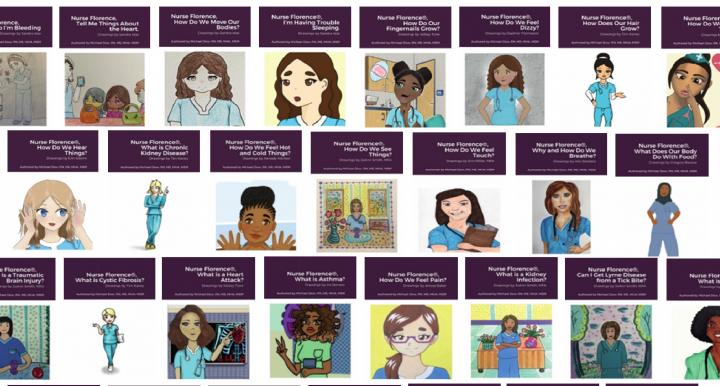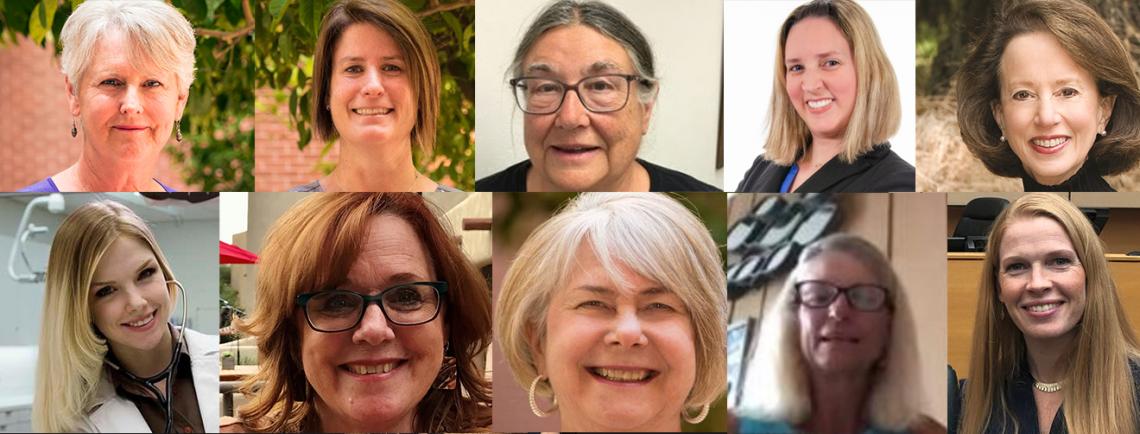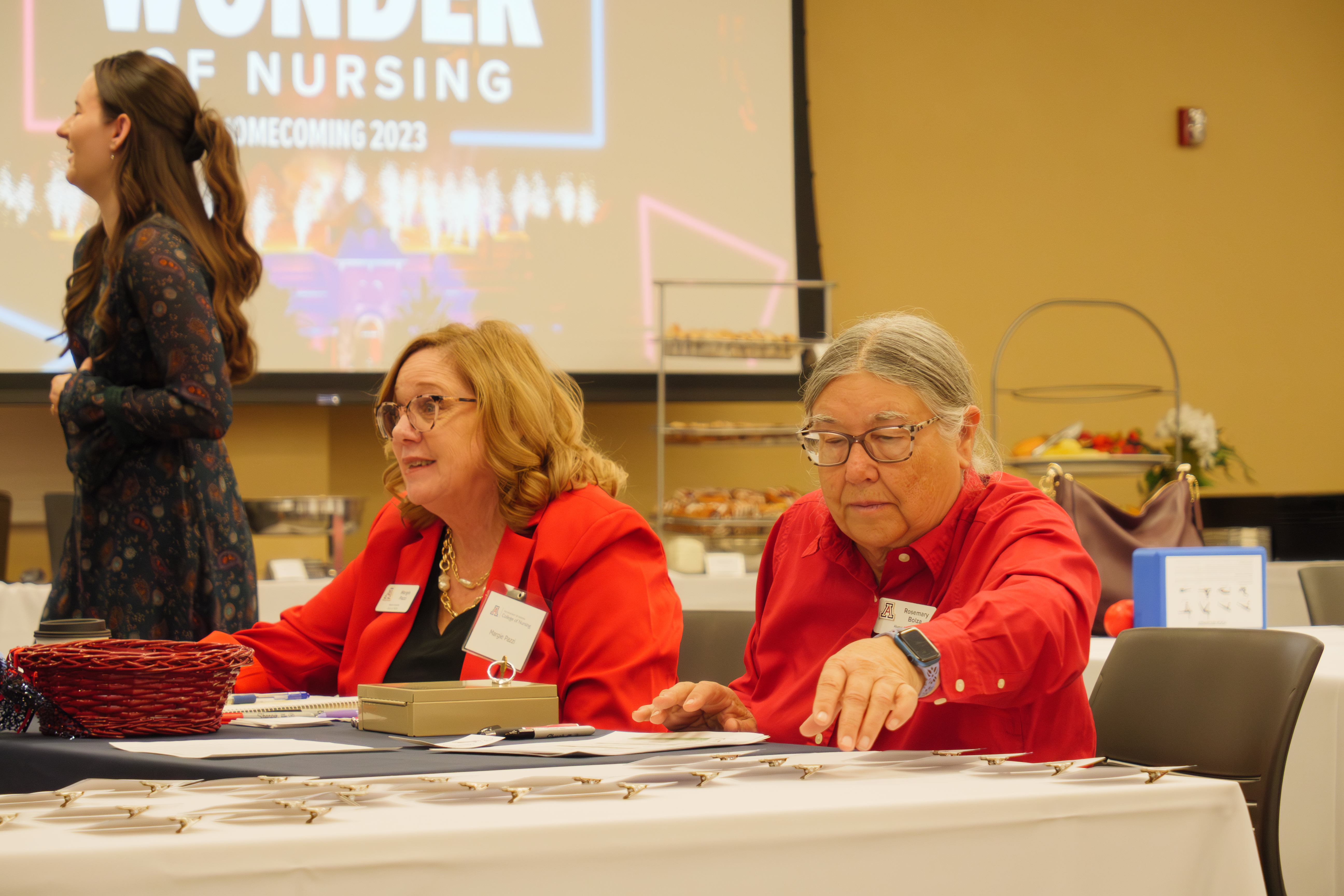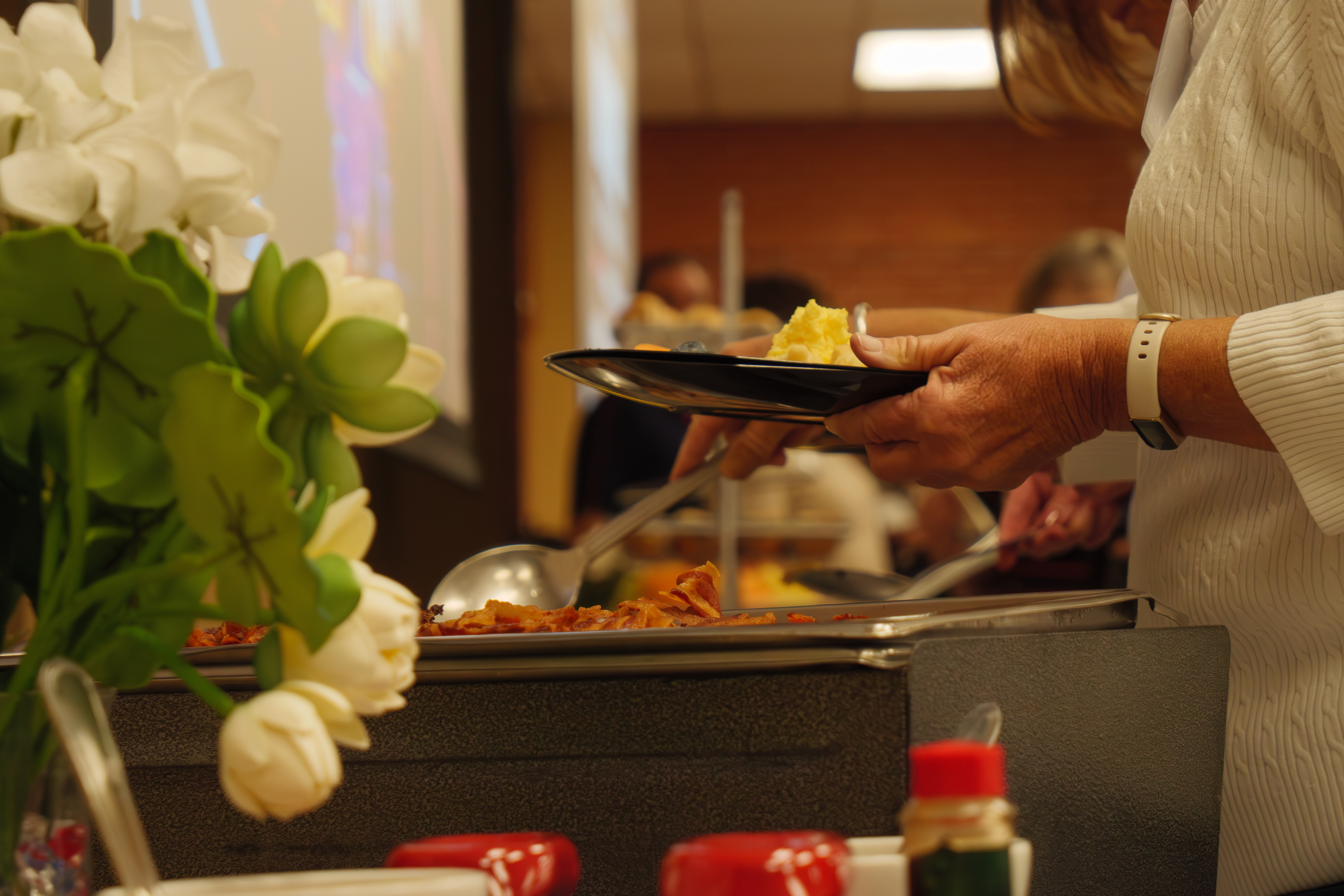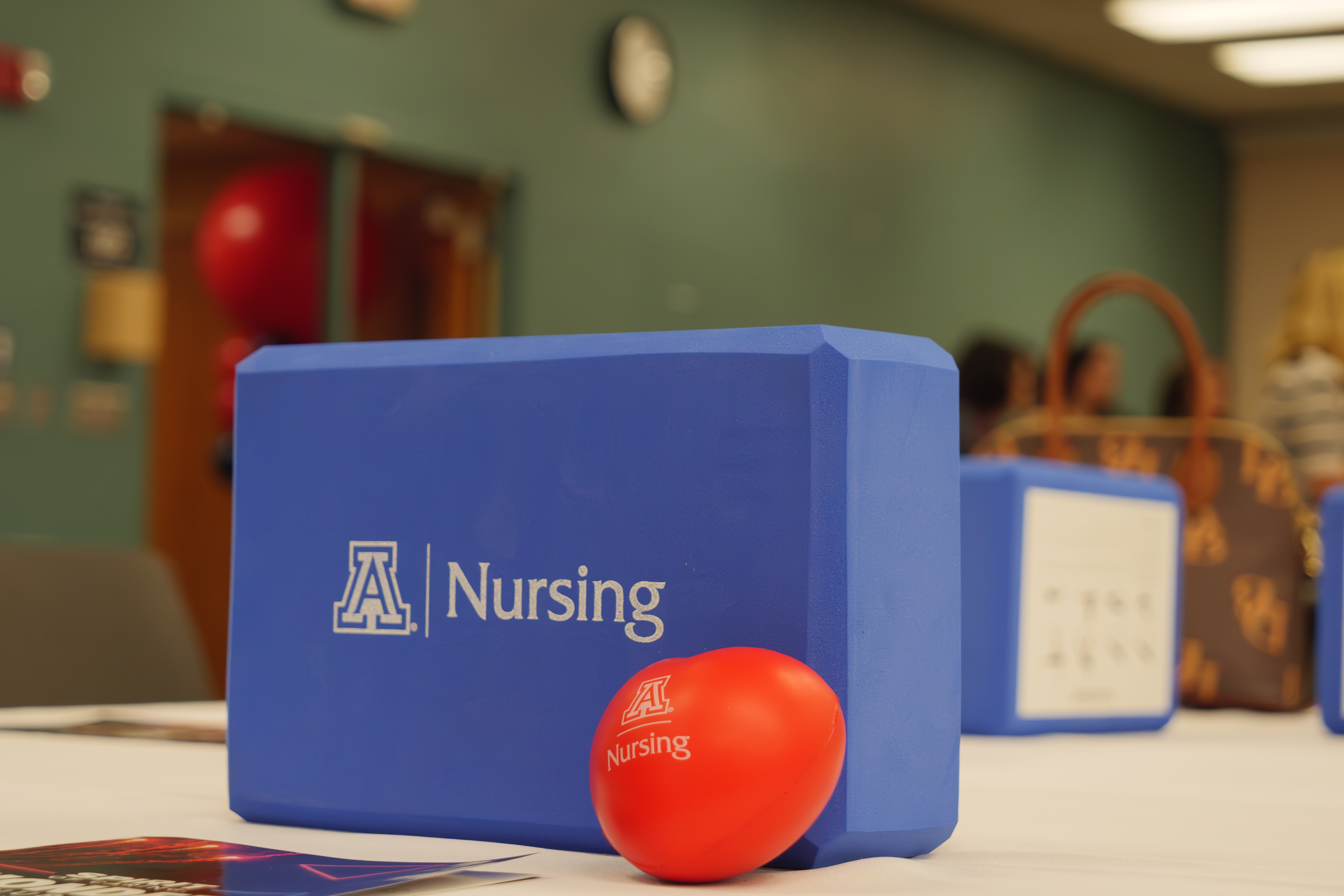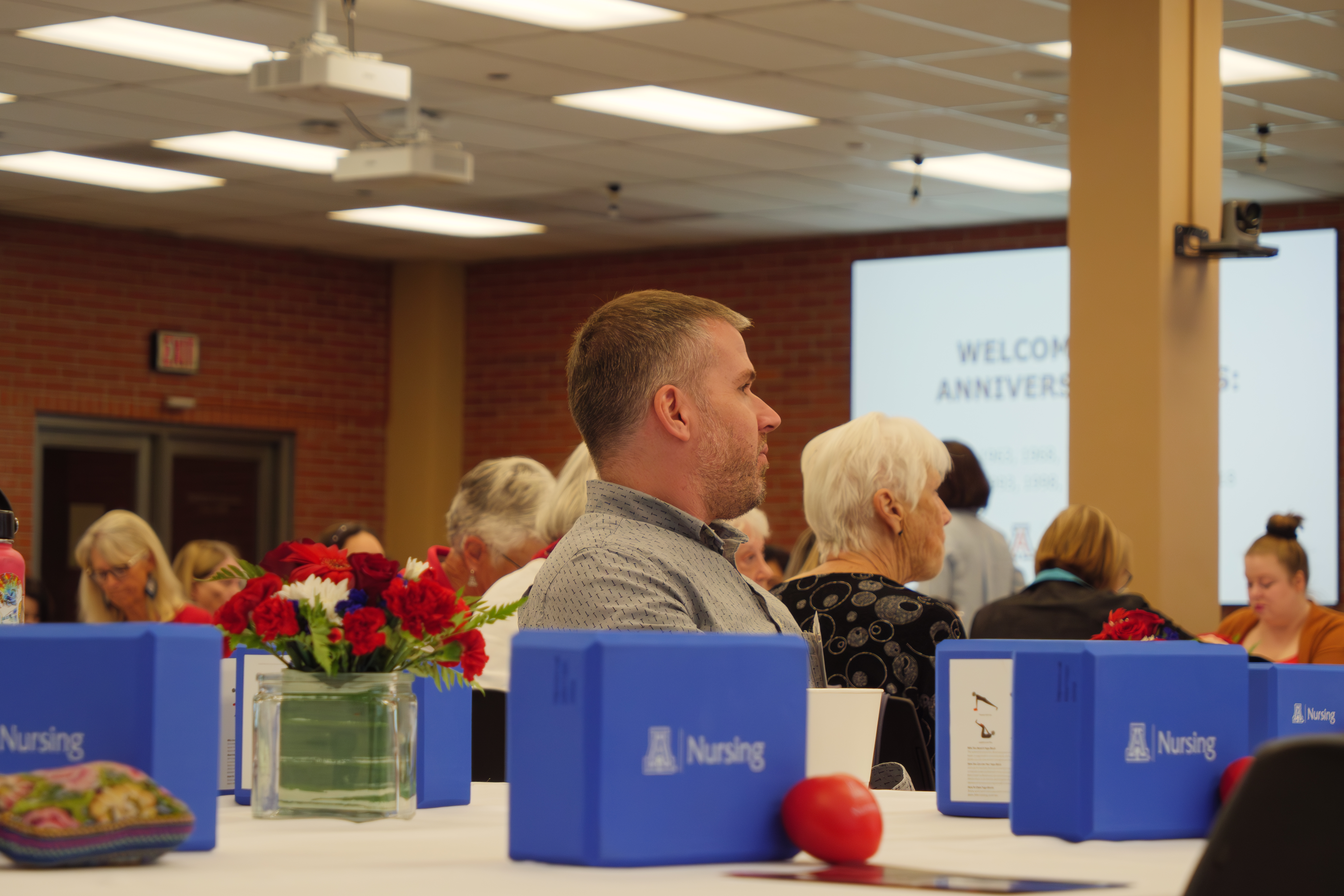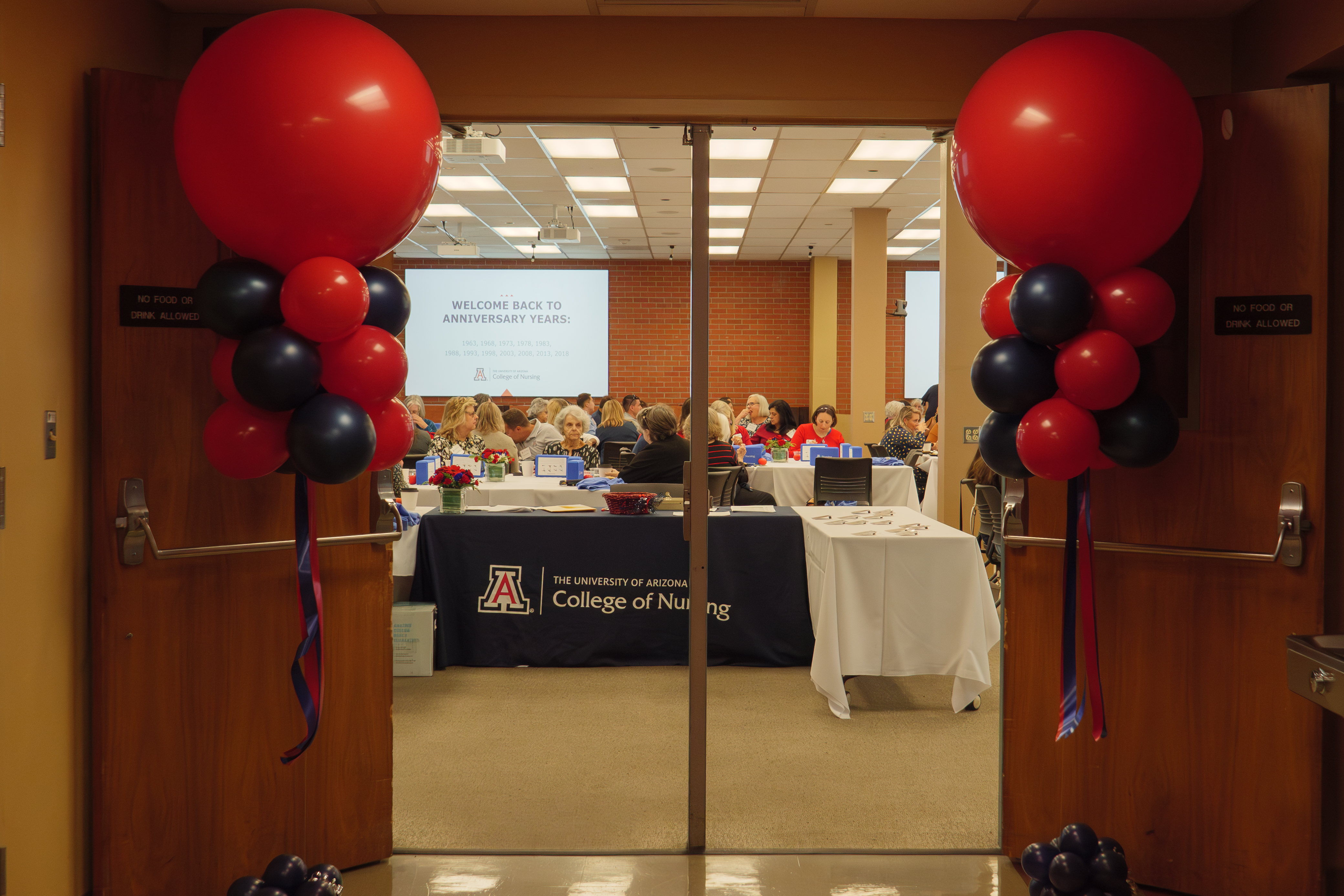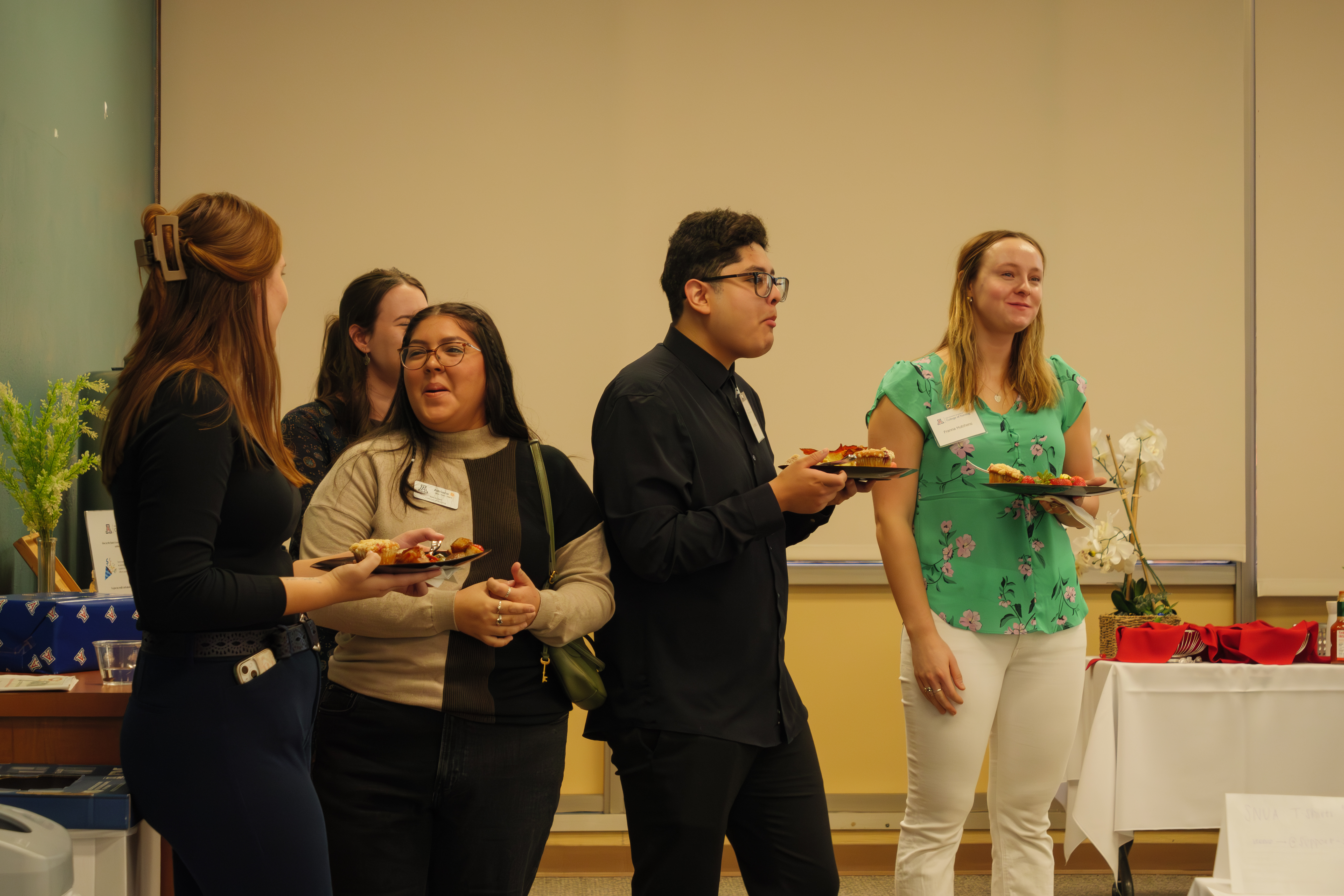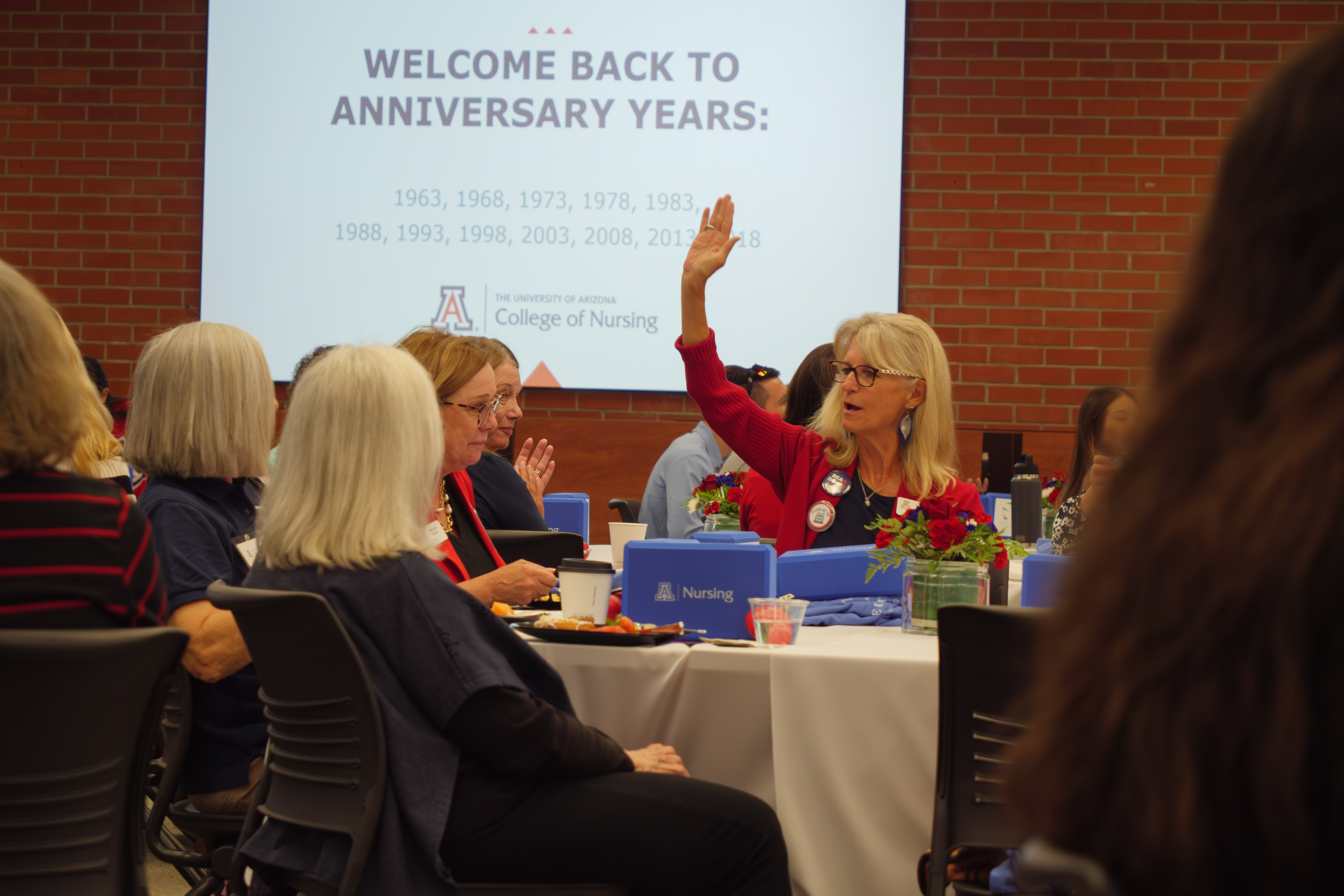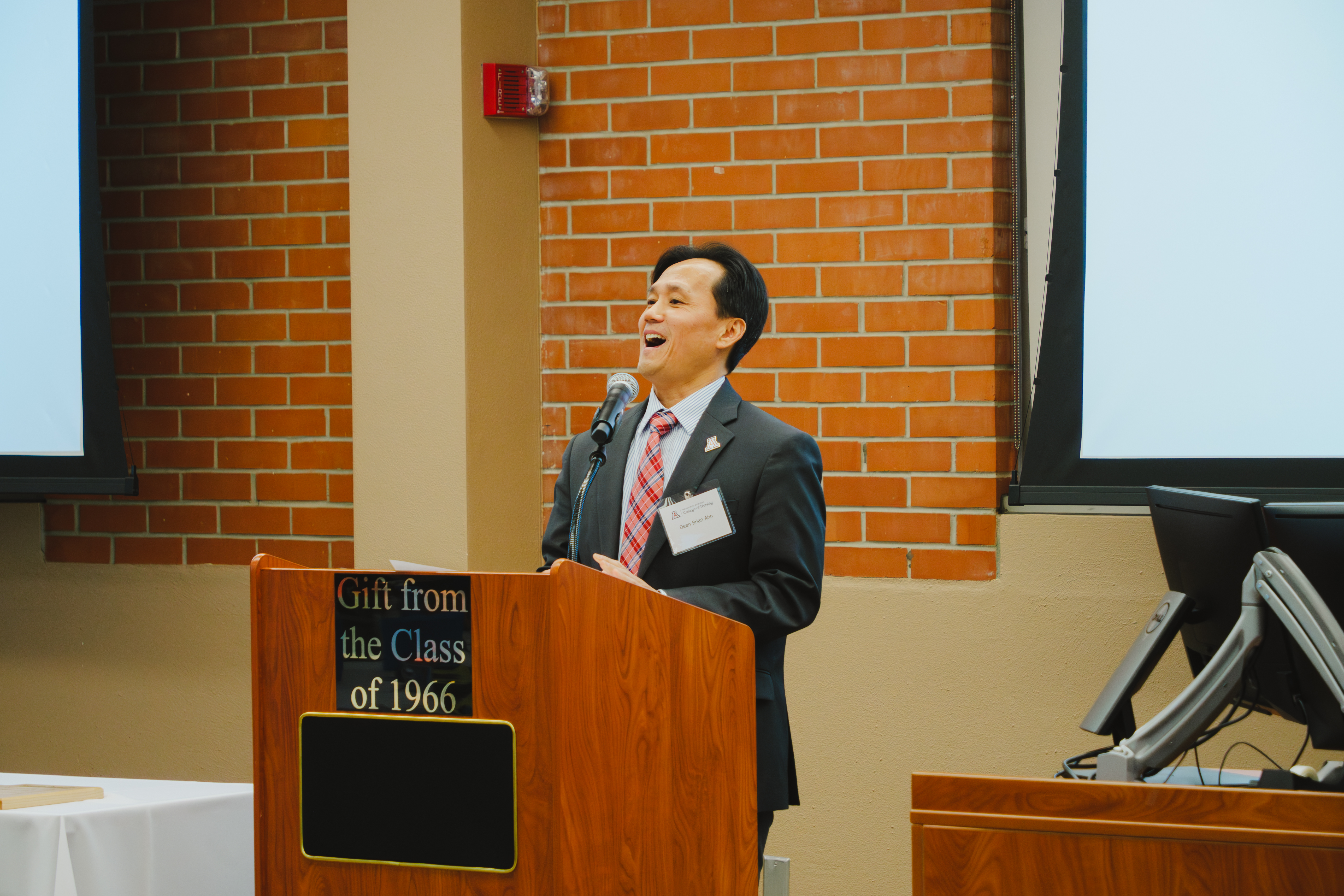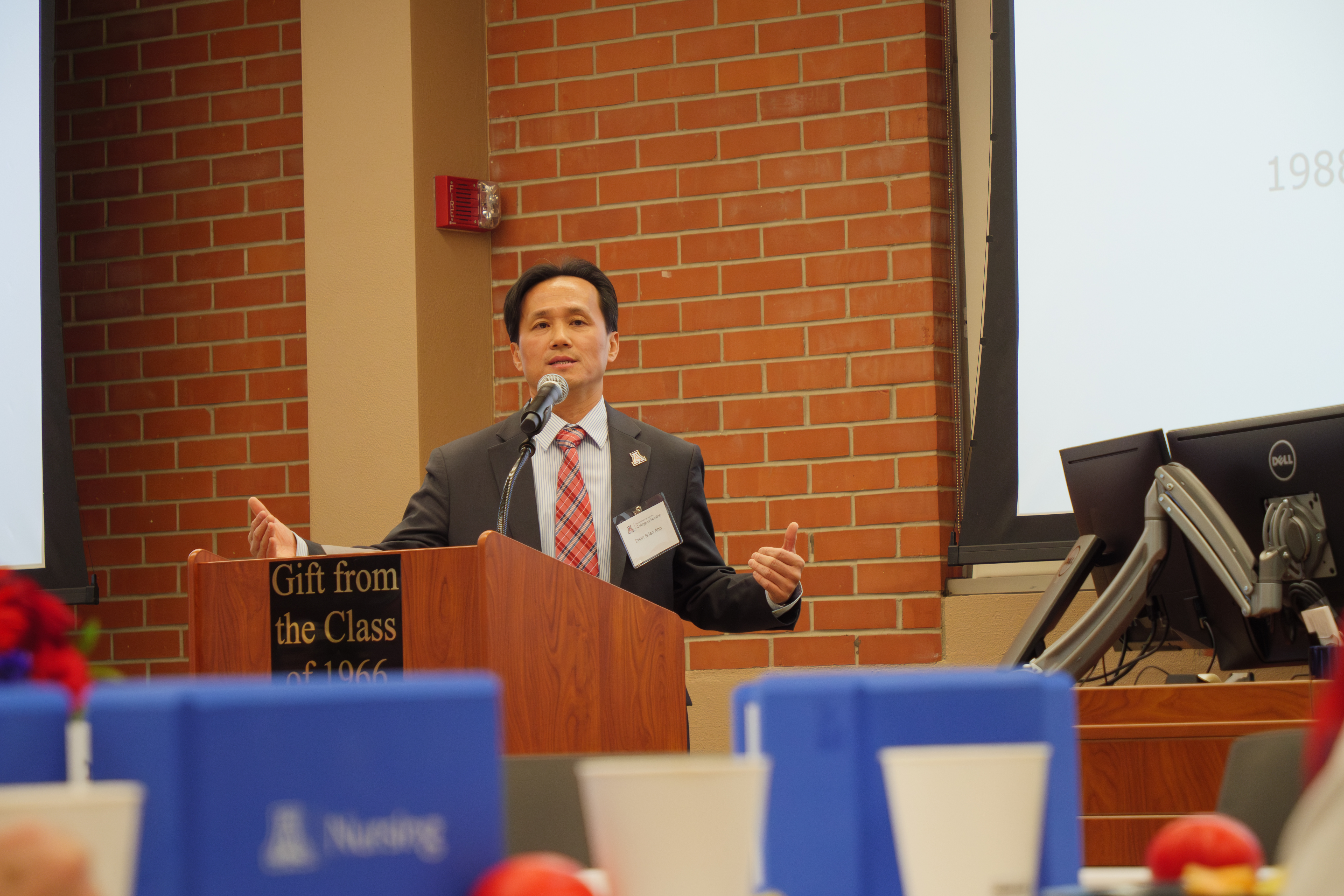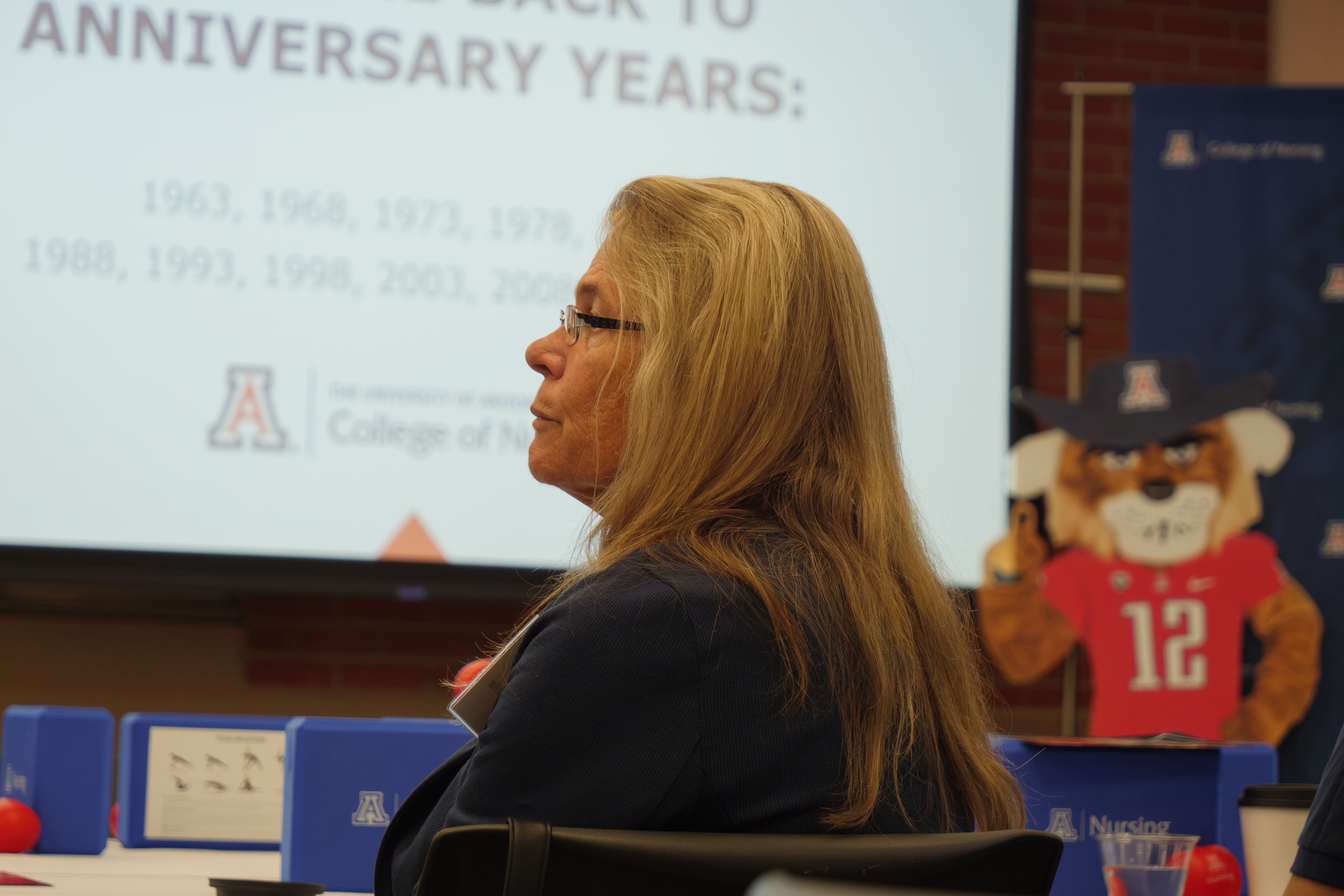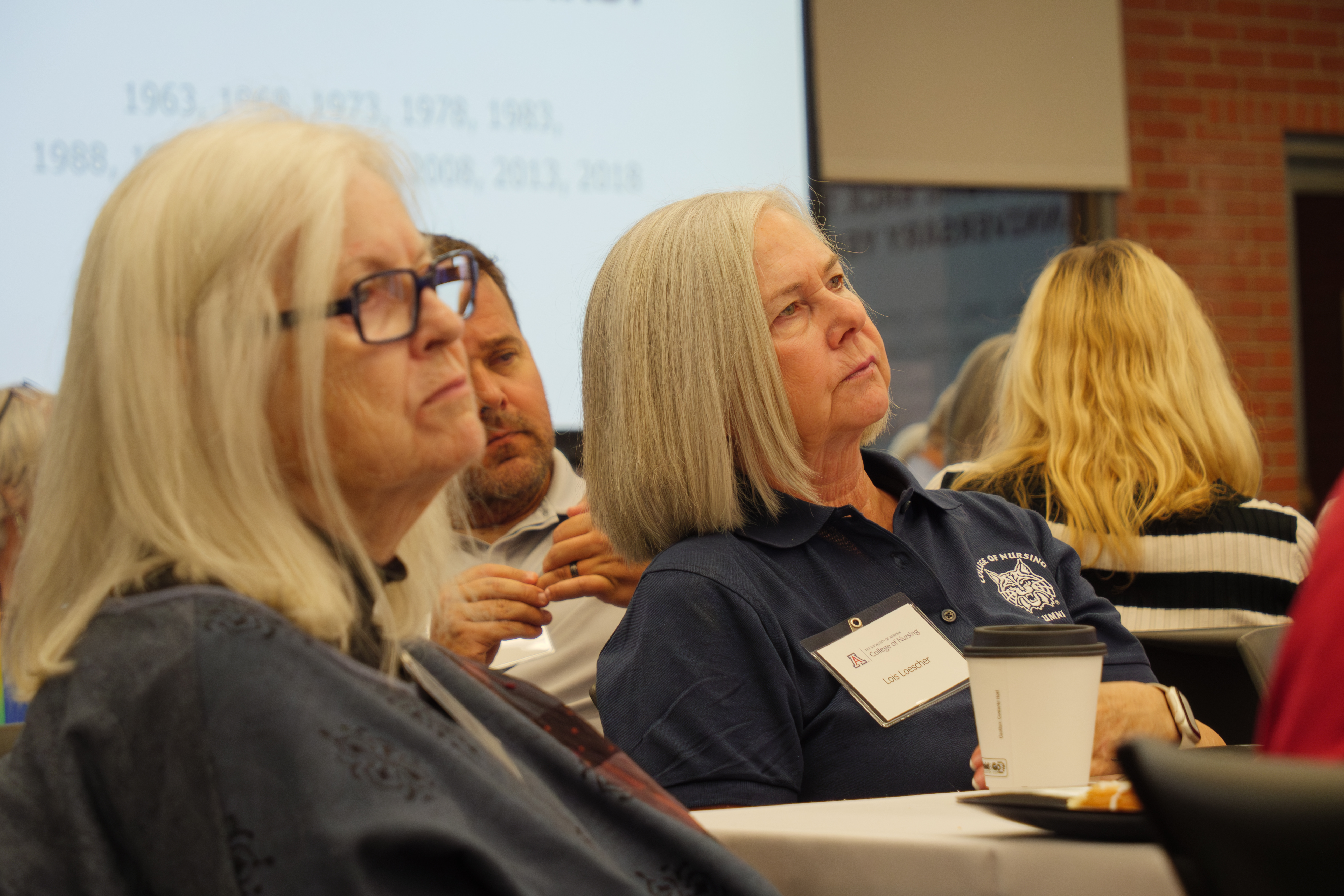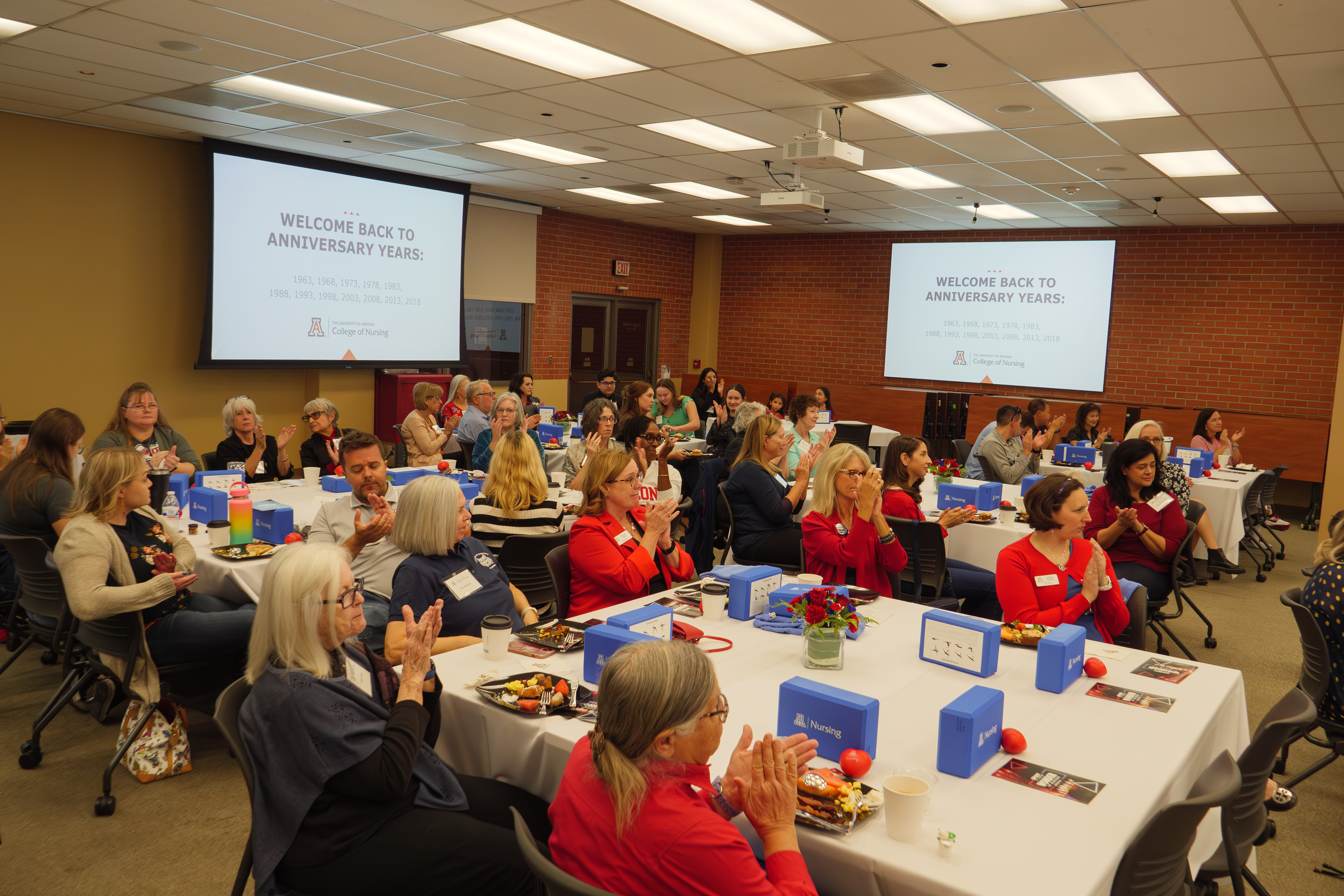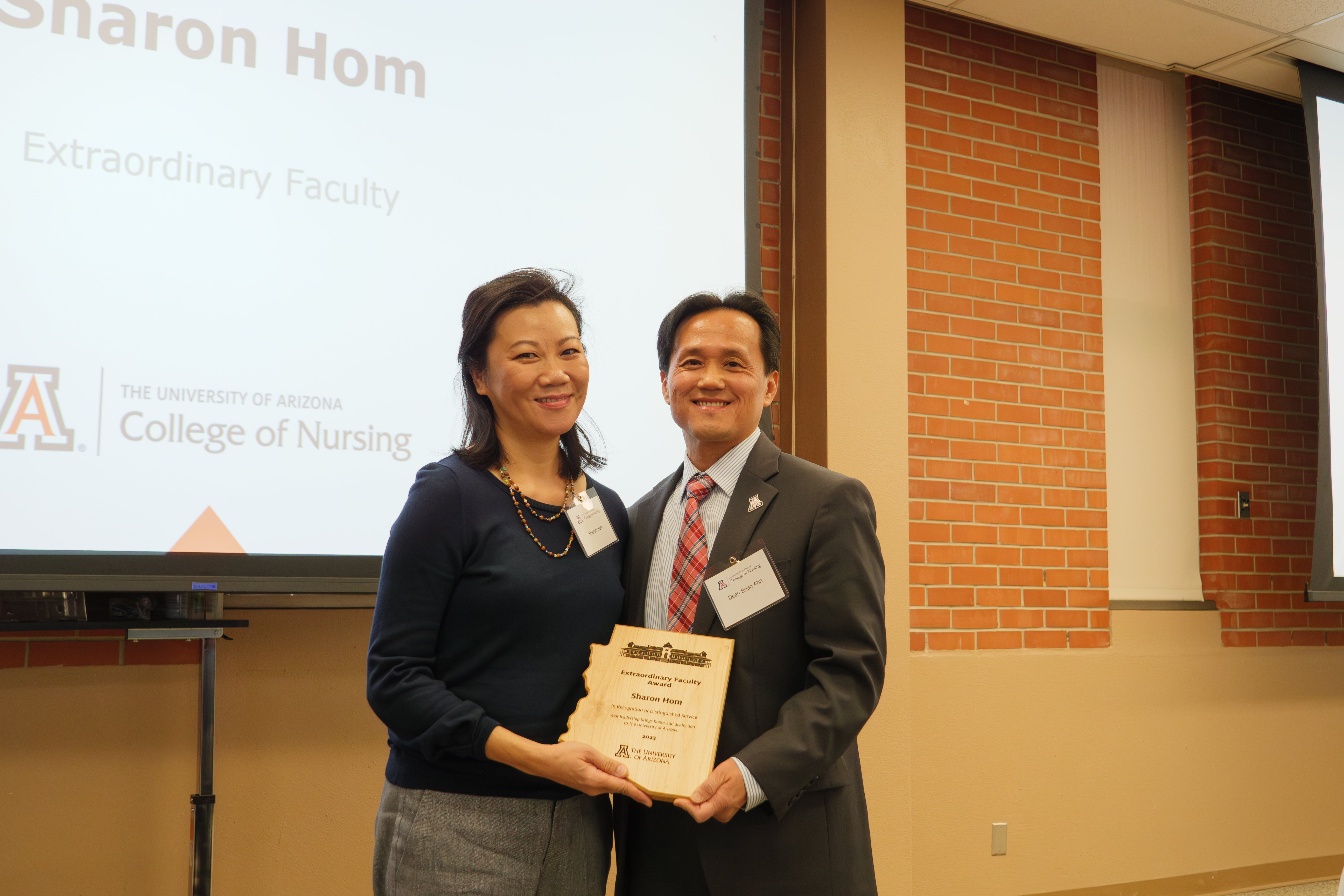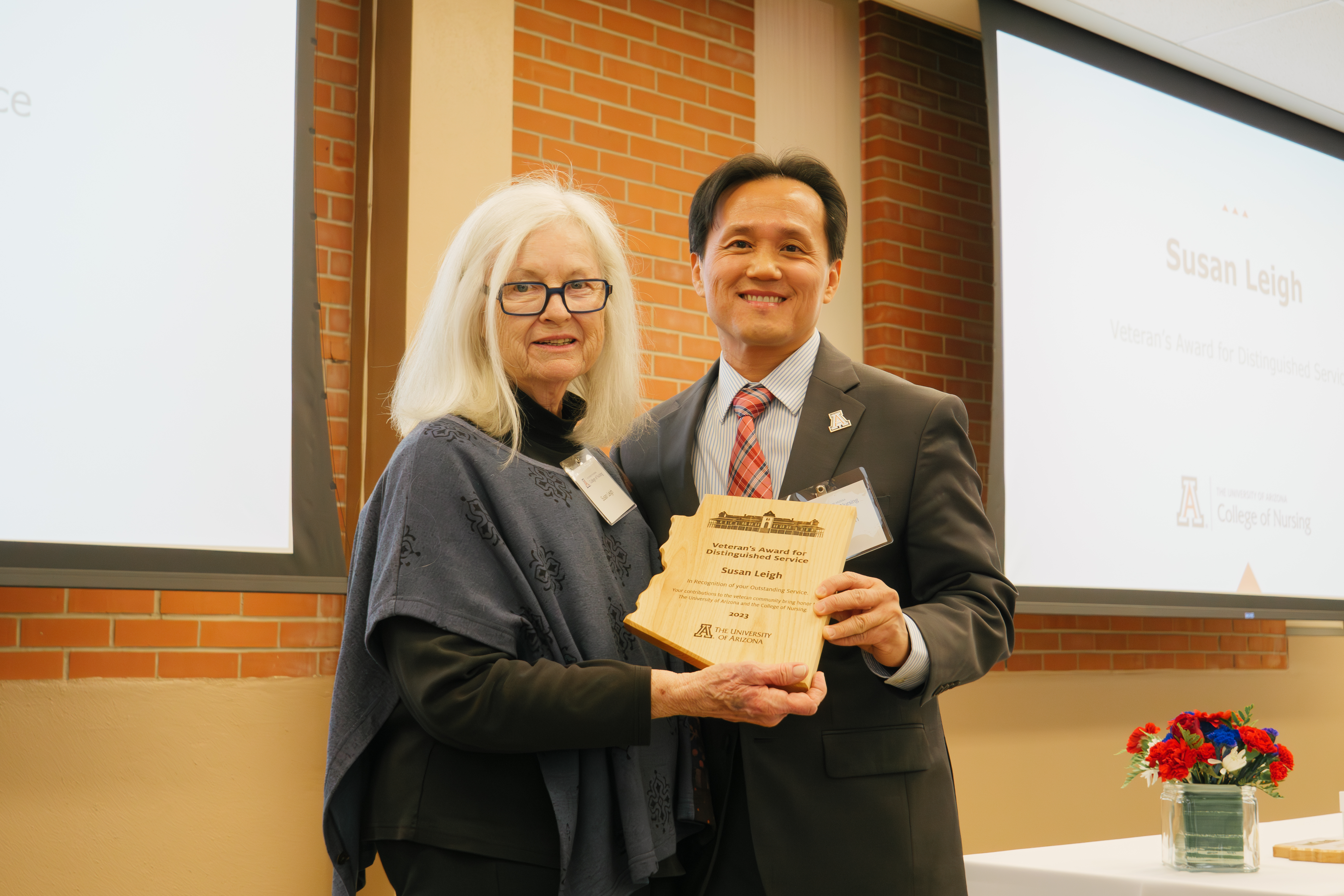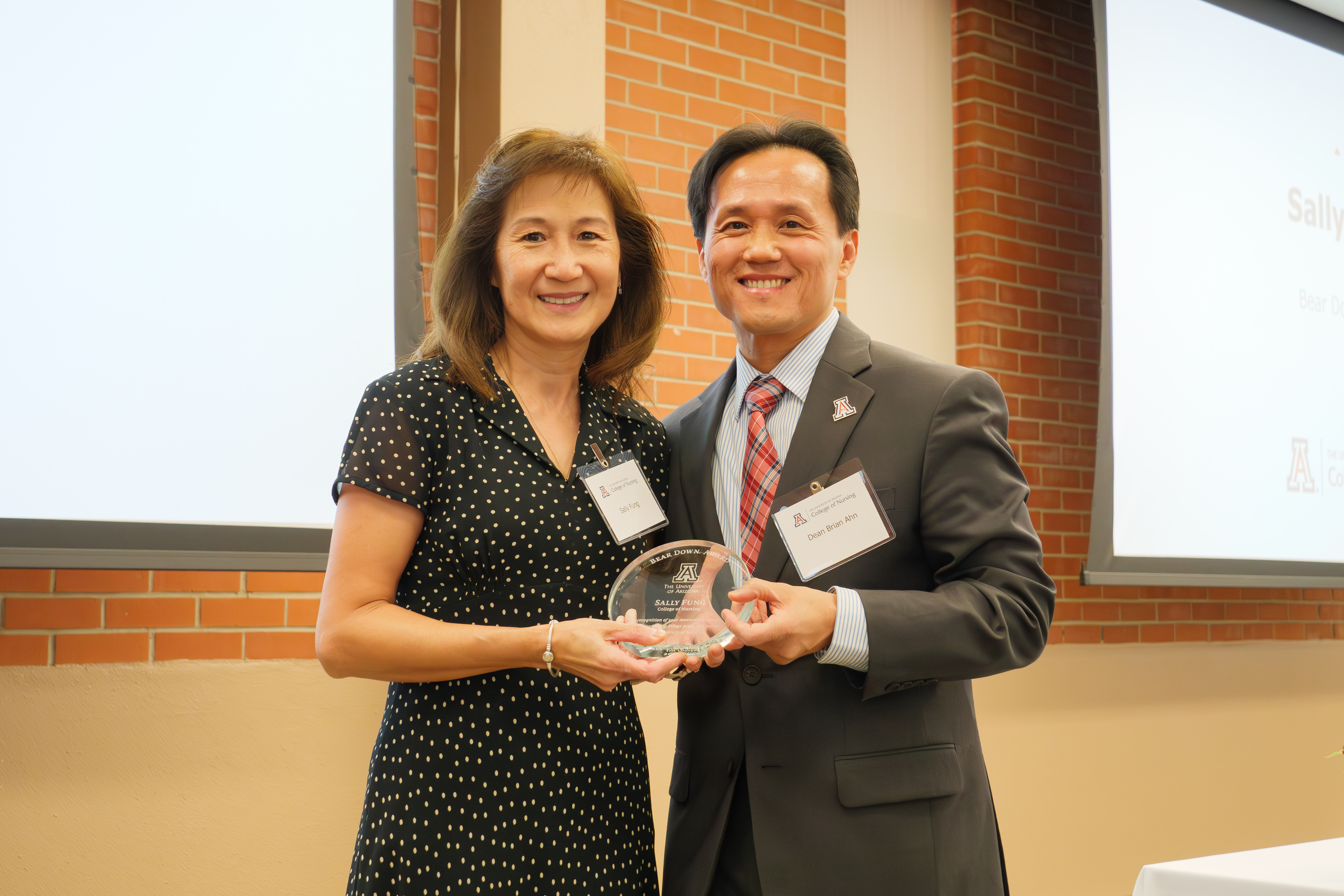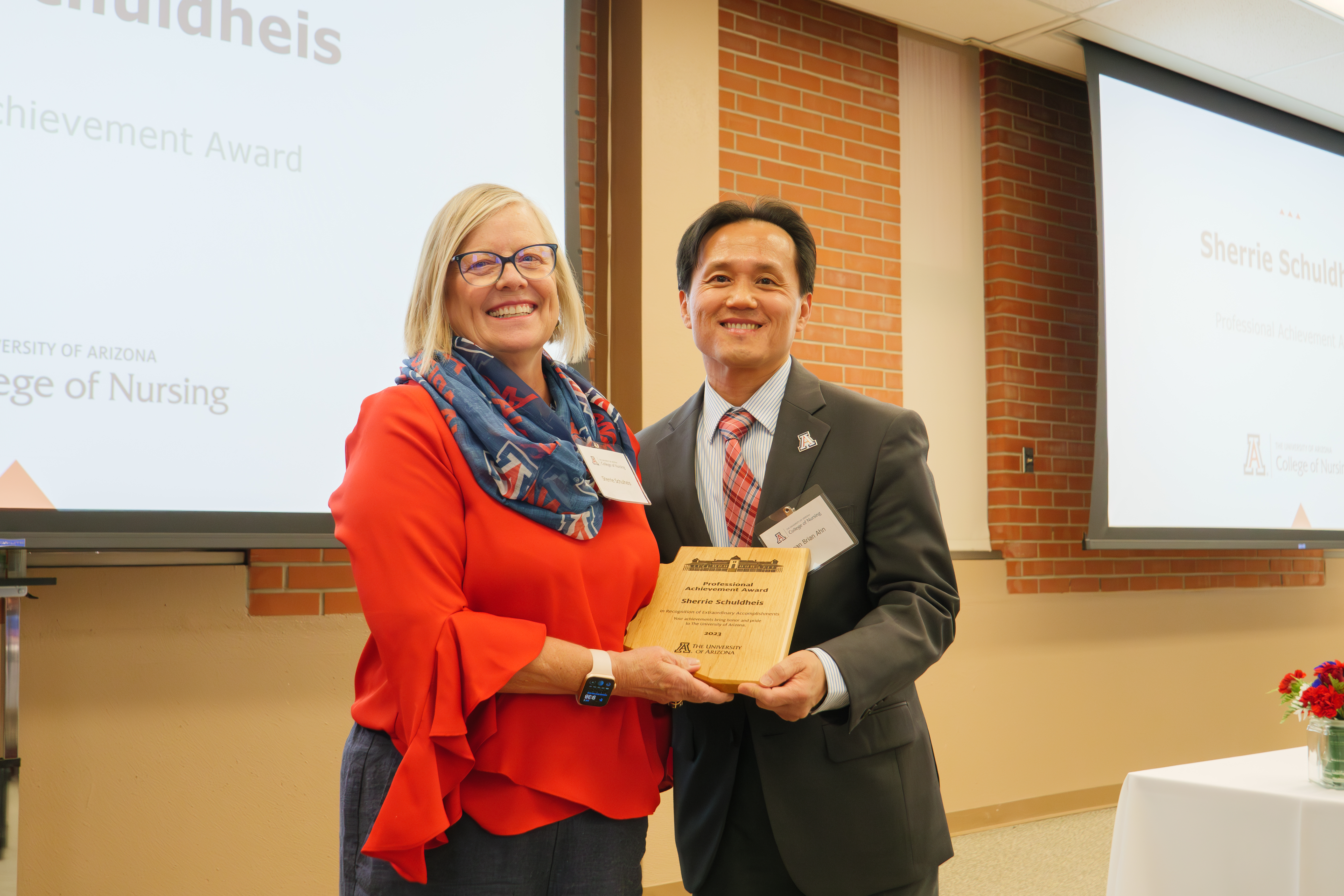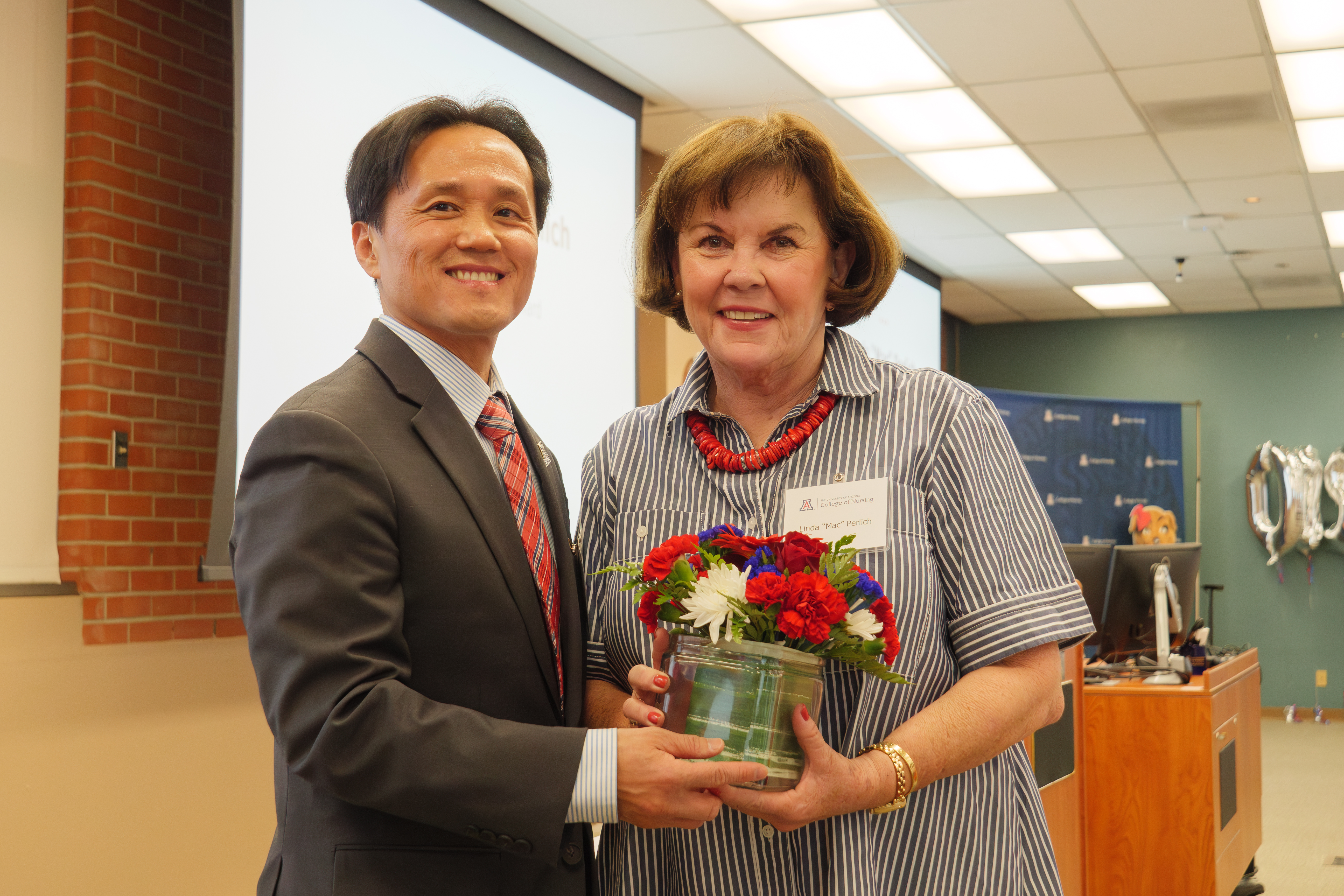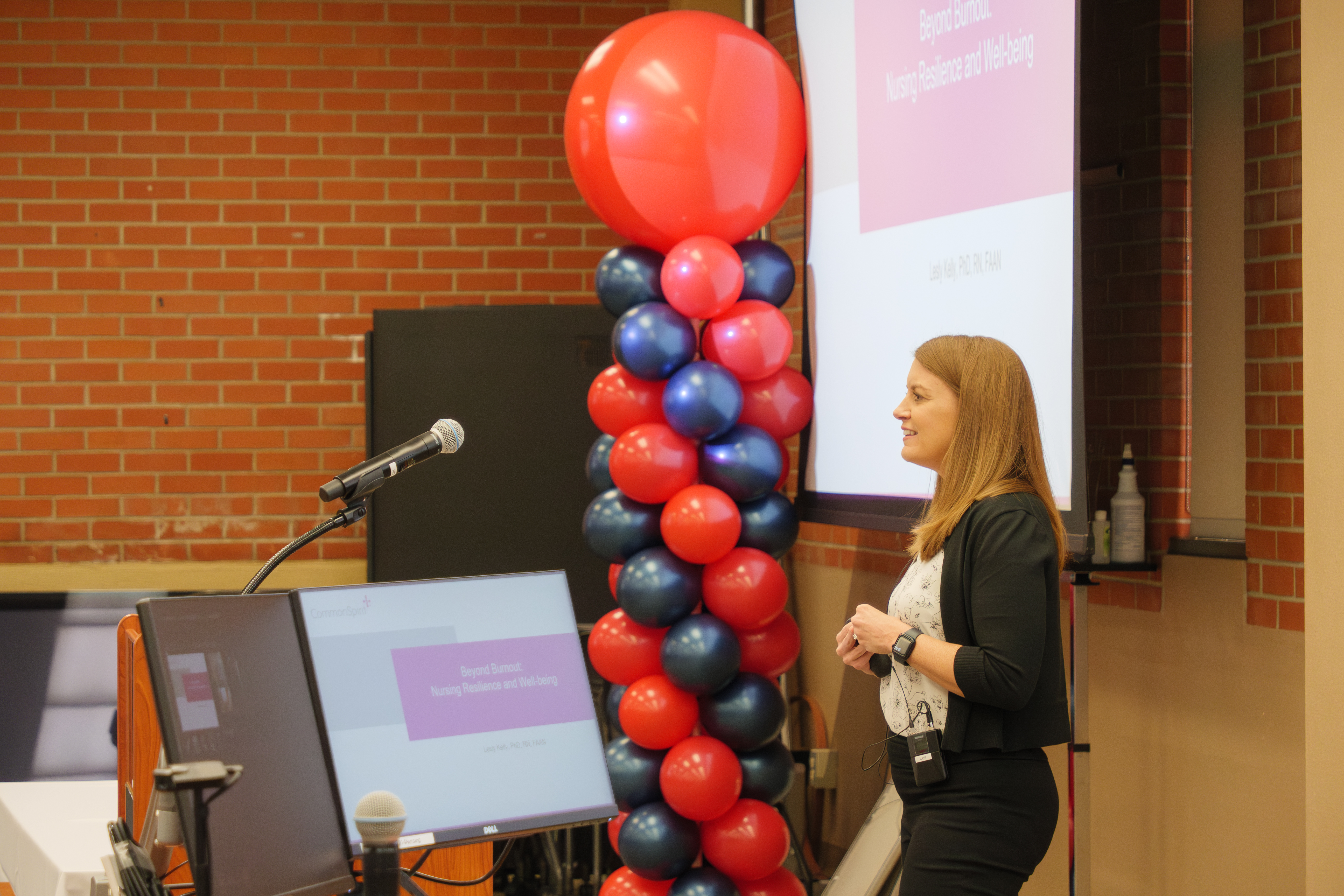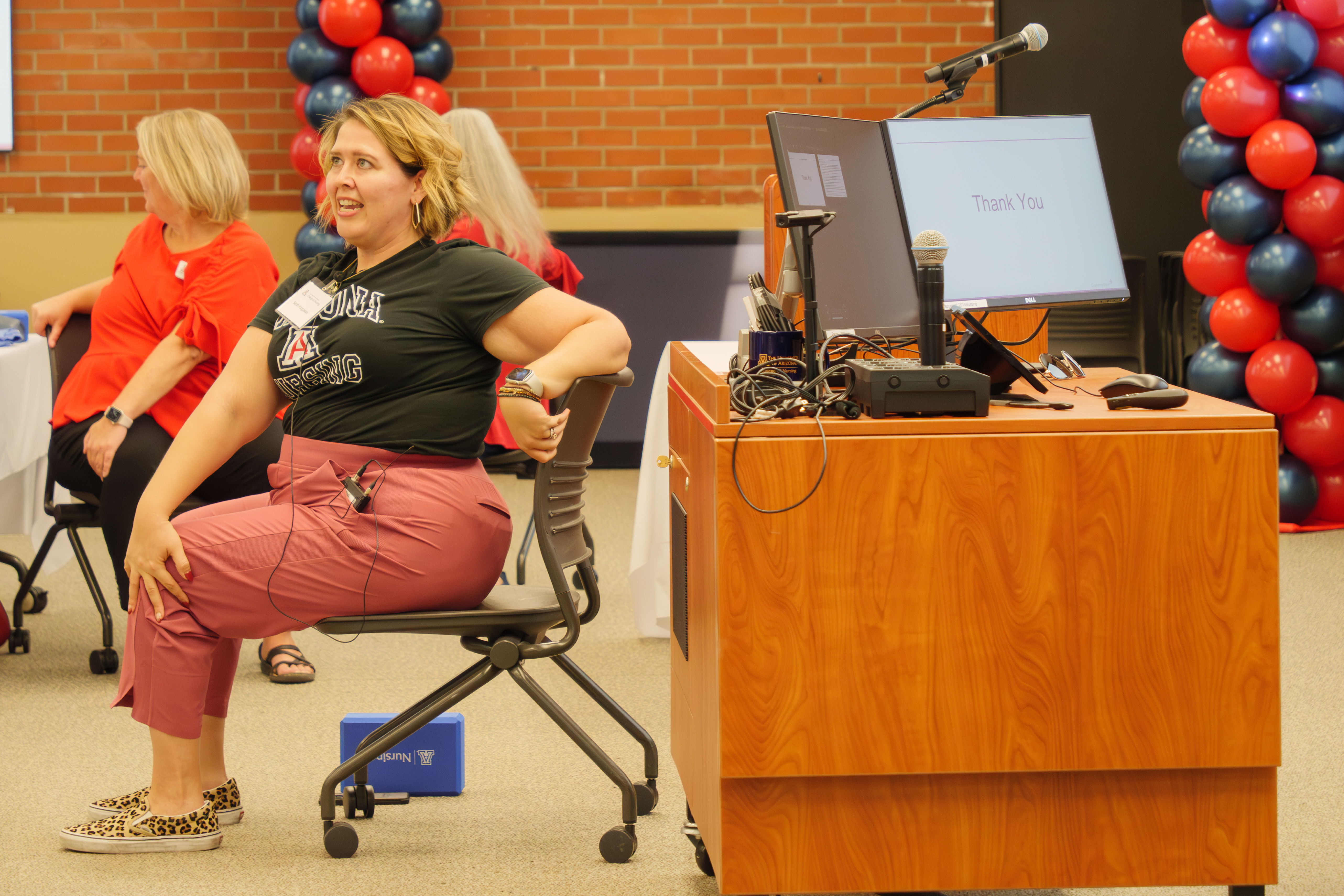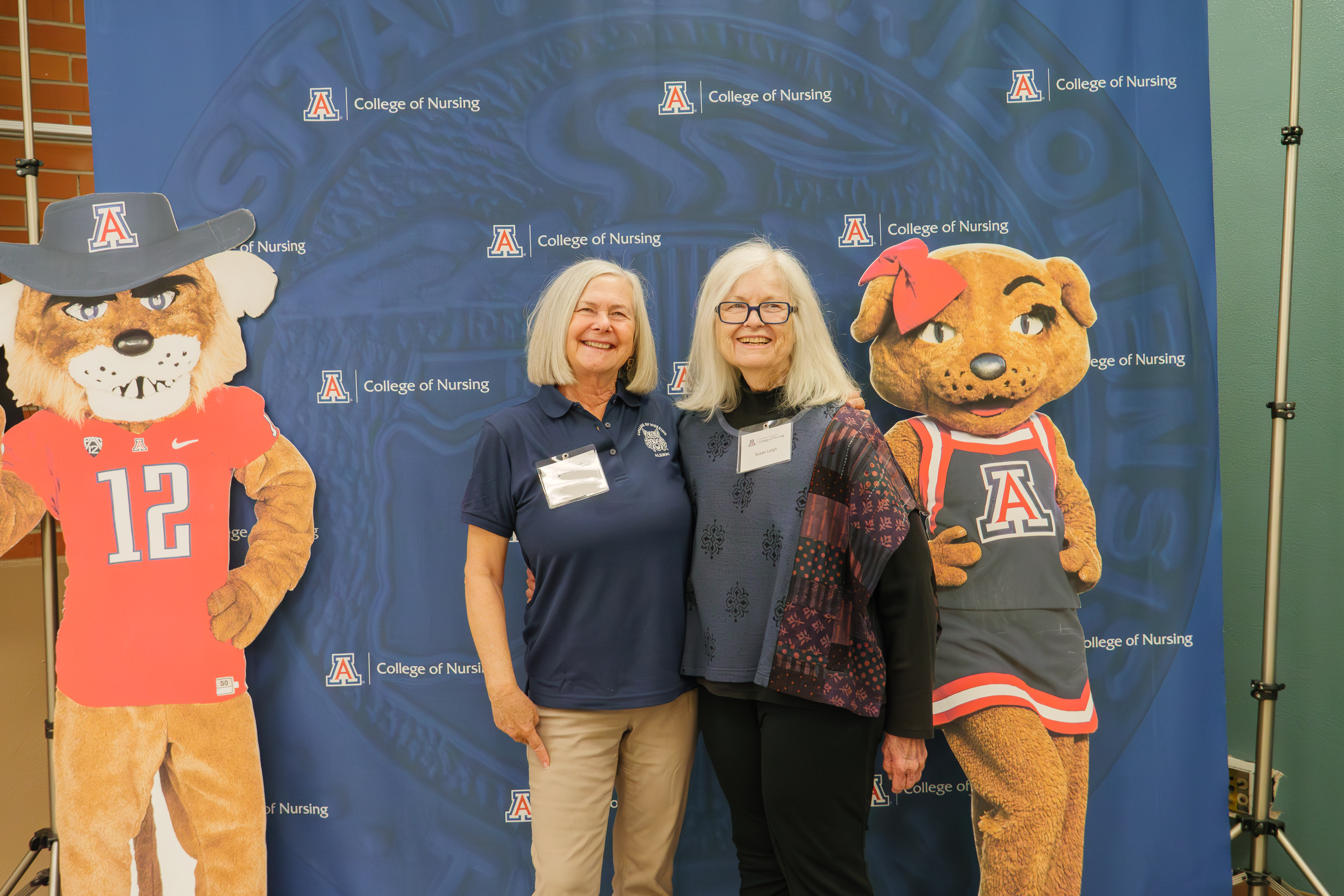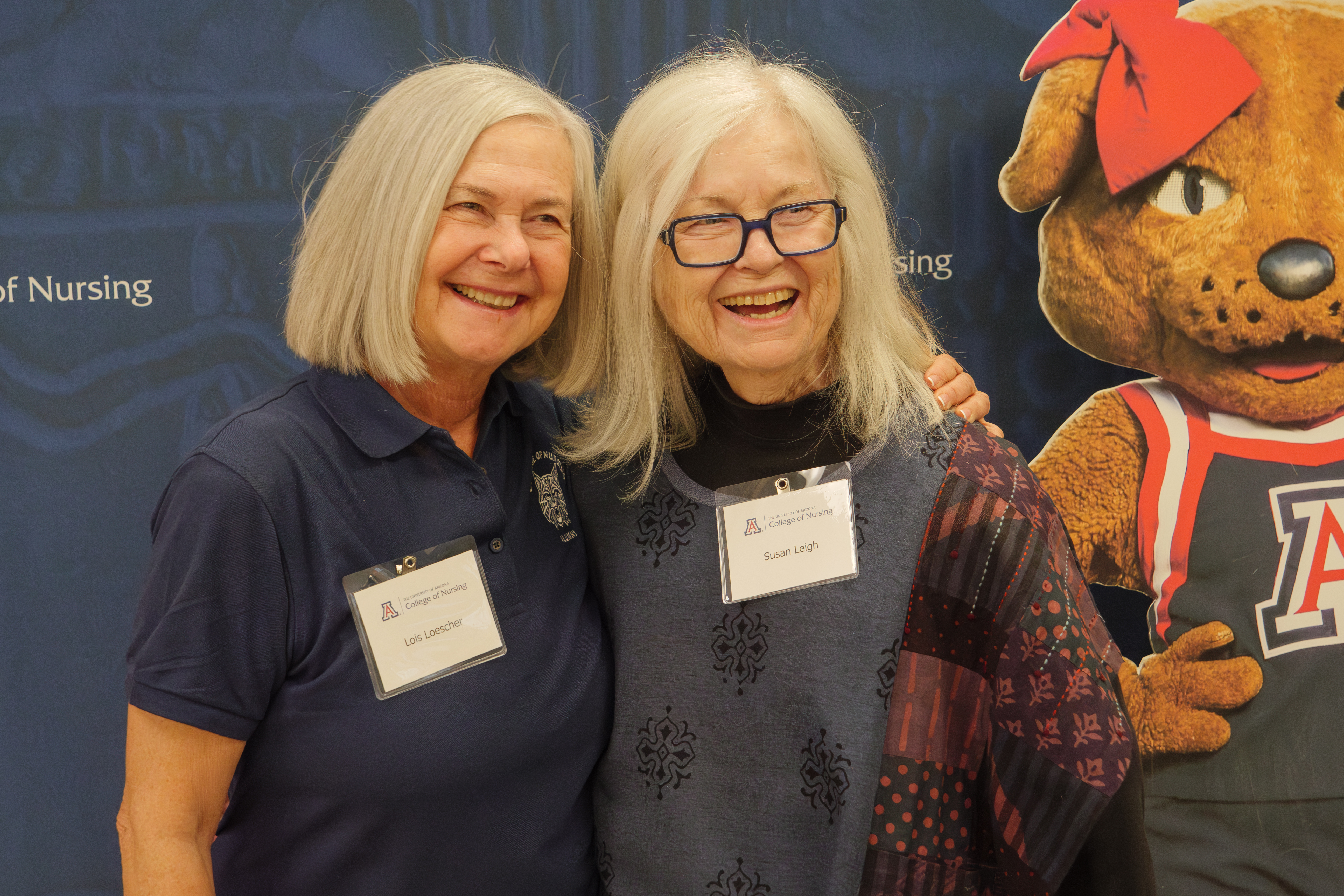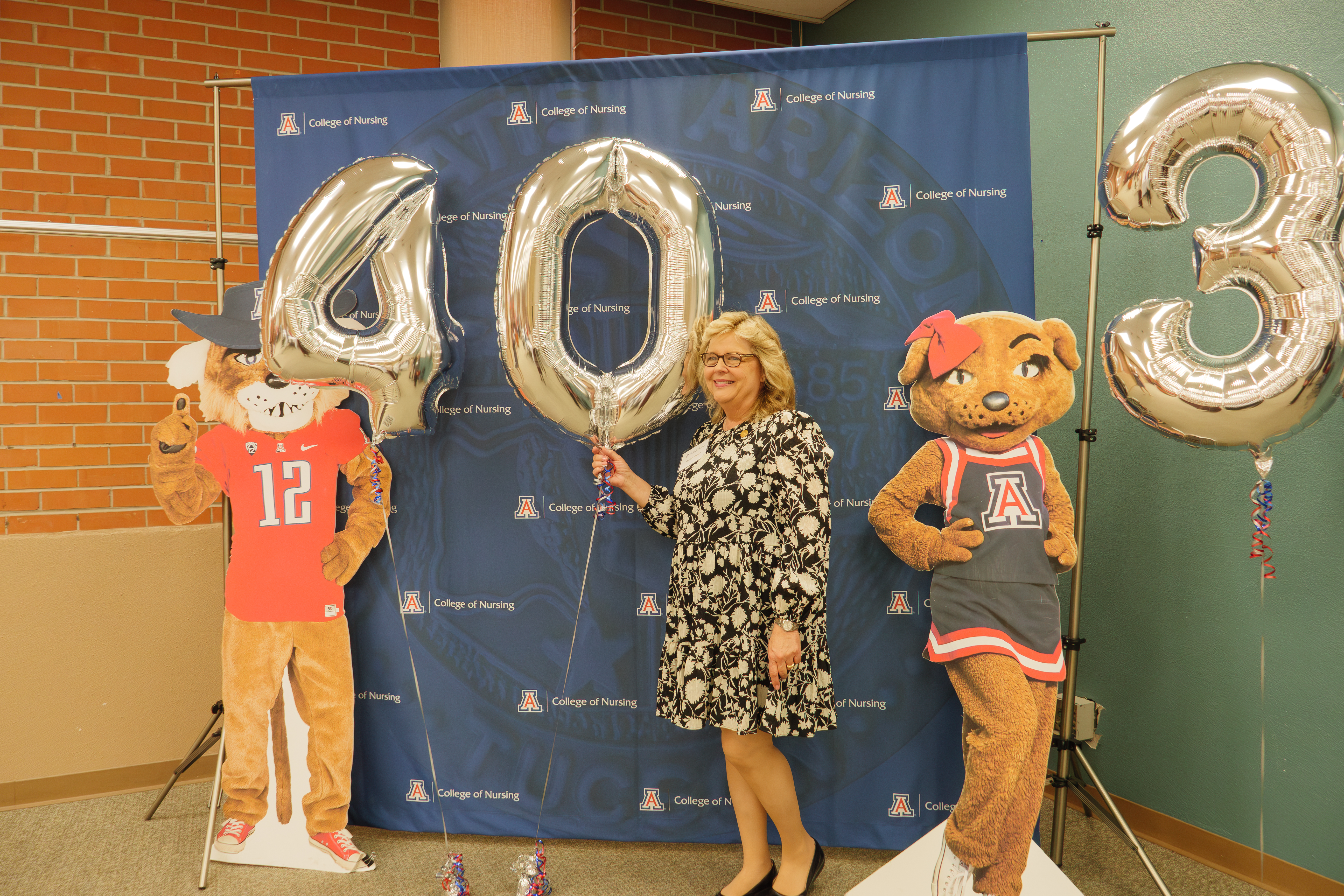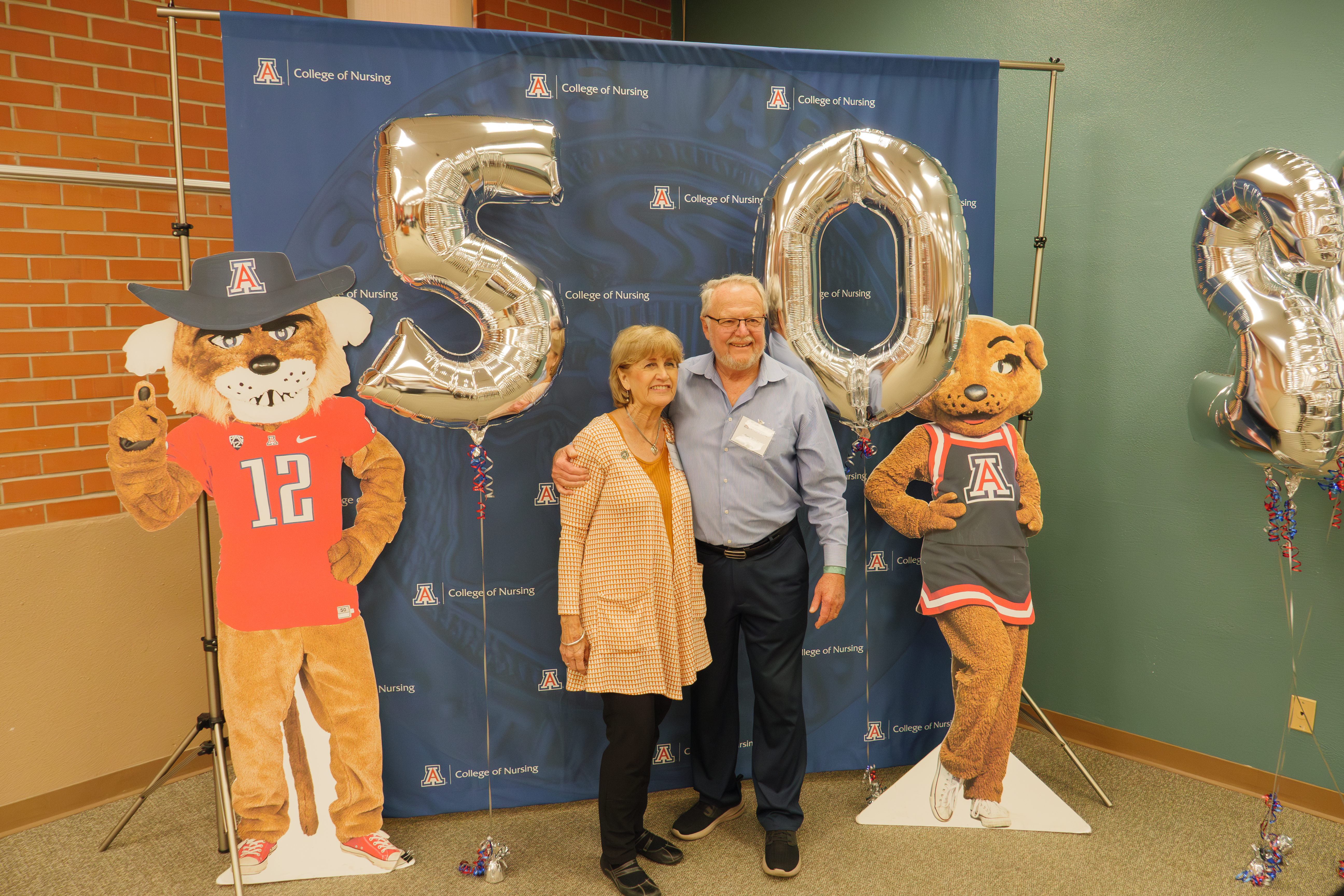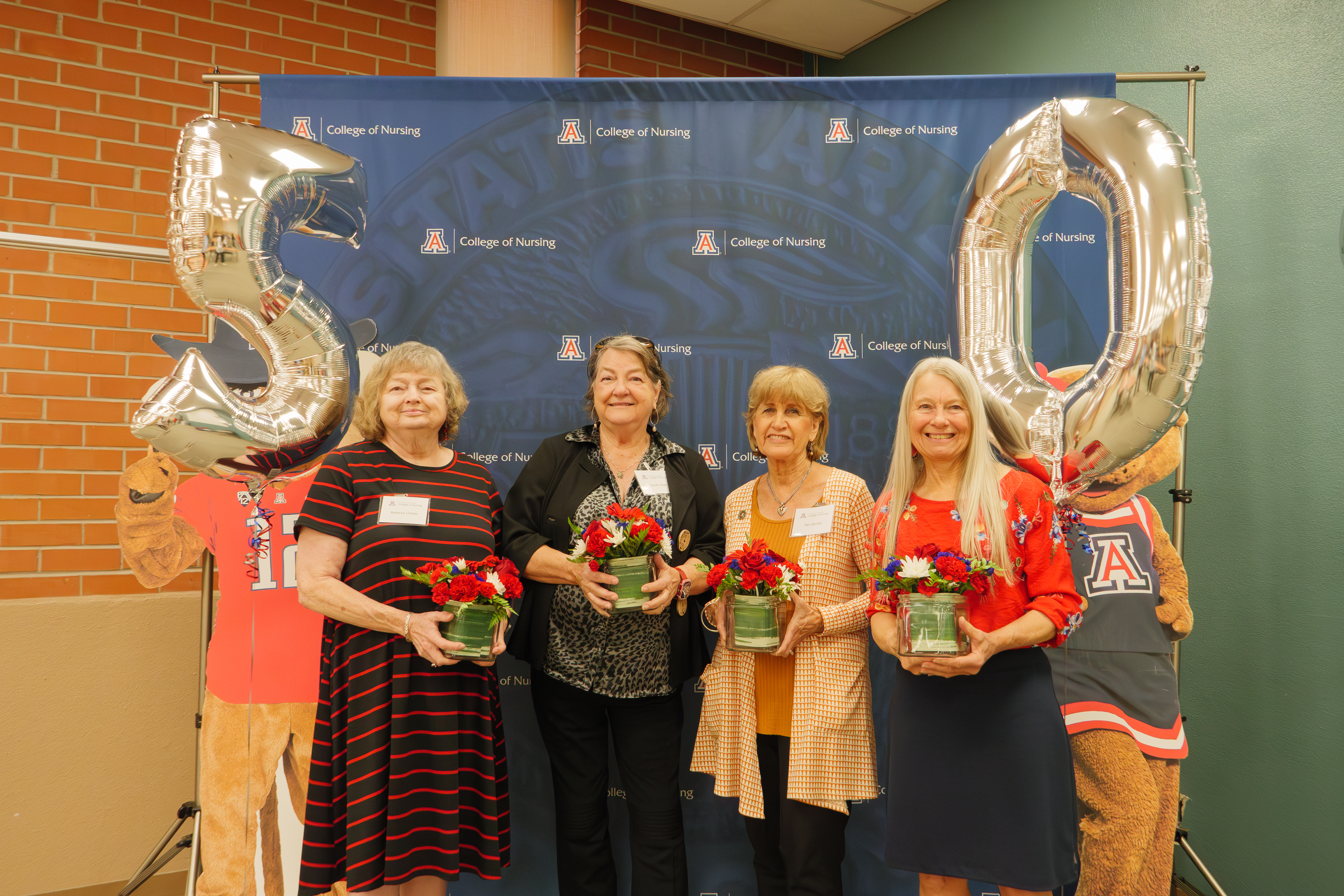Stay in the Know - Update your information with the College of Nursing
Welcome Wildcat Nursing Alumni
The UA College of Nursing Alumni Council is comprised of proud Wildcat Nurses.
All graduates of the College automatically become members of its Alumni Council. There are no dues but many opportunities to get involved and stay connected to your fellow alums, nursing colleagues, faculty and students.
Mission
Actively support the College of Nursing in its commitment to excellence in teaching, research, scholarship and service.
Vision
Sustain college pride in past, present and future excellence.
Purpose
Support and promote the University of Arizona College of Nursing, further the interests of graduates of the College of Nursing and provide a means for alumni involvement.
Alumni Council Homecoming Awards
Through the University of Arizona Alumni Association, we honor several outstanding Wildcat Nursing alumni each year. Consider nominating an outstanding alum for their contributions. Past awardees have been honored for Professional Achievement, Wildcat spirit and Public Service, to name just a few. We also identify nominees for our annual Alumnus of the Year through this process.
Melissa M Goldsmith, PhD, RNC
Alumni Council President
Taking the reins from Margie Pazzi, Melissa Goldsmith, class of 2004, accepted a two-year term as Alumni Council President beginning July 1, 2022. Melissa currently serves as an Associate Clinical Professor in Tucson. In taking on leadership for the Alumni Council, Melissa shared: “I look forward to representing the alumni council and really getting the word out about what we do, and also being involved with events like homecoming that engage our alumni, students, and potentially faculty at the College of Nursing. This is a great opportunity to become involved again with a really great organization.”
Becoming active in the Alumni Council is easy
The Alumni Council is led by a Board that meets monthly. All are welcome to join in meetings in person on the Tucson campus or via zoom. Meetings focus on event planning including homecoming, student engagement events, and social events for alumni.
View CON Alumni Council Bylaws
Do you have questions, would like to attend the next meeting, or be included on the alumni council mailing list? Contact:
Ashley Hammarstrom, MA
Director of Development
520-626-6022 or ahammarstrom@arizona.edu(link sends e-mail)
Alumni Council Board of Directors
Alumni Council Board of Directors (clockwise): Melissa Goldsmith, Helena Morrison, Rosemary Bolza, Juliann Arnold, Anne Rosenfeld, Hanne Dolan, Susan Schweitzer, Lois Loescher, Marjorie Pazzi, Chloe Littzen-Brown, and Coco Grant (not pictured).
Let's Connect!
Sign up for the Wildcat Nursing News and the Bear Down Network
Stay connected: Don’t forget to like us on Facebook, follow us on Twitter, or connect with us on LinkedIn
Check out the photos from our 2023 Homecoming
Spirit of Caring, Wonder of Nursing, November 4th, 2023
Share your alumni news
Do you have news about yourself or a fellow College of Nursing alumnus/alumna? Please tell us about it, and give us a way to contact you. We love to hear your stories, and to share them with the college and UA community. Have a Wildcat Nursing memory or class picture you would like to share? Email Tanya Welch at tanyawelch@arizona.edu or call at 520-334-0109.



